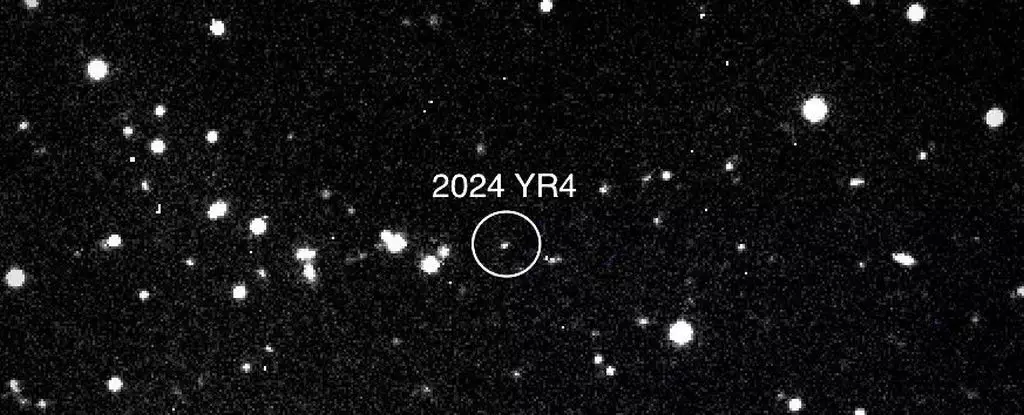In a world rife with chaos and uncertainties, the mere mention of an asteroid making a close pass of Earth stirs up a cocktail of panic and intrigue. Presently, asteroid 2024 YR4, once perceived as a looming threat—a hypothetical ‘city killer’—poses no immediate danger to our planet. The odds of a catastrophic collision are so minuscule—hovering around a mere 0.001 percent—that we can breathe easy for the time being. But, hold your applause; the narrative shifts subtly yet unfavorably when we discuss our lunar companion. As researchers delve into the asteroid’s trajectory, the Moon remains at risk, and for many, that revelation eats away at any fleeting tranquility we might have felt.
Celestial Roulette: Moon in the Crosshairs
The findings, led by planetary astronomer Andrew Rivkin from the esteemed Johns Hopkins University, reveal that while Earth is safe for now, the Moon isn’t completely out of the woods. A potential impact is cataloged not as a possibility, but an alarming non-zero probability. The curtain is only partially drawn back on the future as this celestial body gears up for its pas de deux with the Moon in December 2032. This begs the question: how seriously should we take these findings? While it’s tempting to minimize this as mere speculation, it’s crucial to acknowledge the intricate dance of celestial mechanics where individual trajectories can turn ominously unpredictable.
The stark reality is, with only limited research and observational data available, we are left grappling in the dark. Significant concern lies in the unpredictable nature of asteroid paths through the cosmos. A collision with the Moon may appear less catastrophic than an Earth impact, but thinking in terms of relativity can blind us to the potential consequences. Even a relatively small impact could have far-reaching effects on both the Moon and Earth, especially considering how tightly intertwined our fates are with this celestial neighbor.
2024 YR4: A Warning for Humanity
The journey of asteroid 2024 YR4 began with a sense of urgency, as scientists initially overestimated its impact potential to around 3.1 percent—an eyebrow-raising figure that could rattle any rational soul. While subsequent calculations have brought those odds tumbling down, the narrow margin between safety and catastrophe is cause for concern. The fact that we can catch these celestial bodies in our observational nets is a double-edged sword. We are reminded of how defenseless we are, floating aimlessly in the vast universe. Despite our technological advancements, our ability to fully comprehend the threats these cosmic bodies pose remains tragically inadequate.
As the asteroid was unraveled by the keen eyes of the James Webb Space Telescope (JWST), astronomers painted a vivid picture of its potential dangers. A rock 60 meters in diameter hints at significant energy if it were ever to collide with Earth—a yield roughly between 2 to 30 megatons of TNT. If we juxtapose these grim calculations with historical data from events like the Tunguska explosion, we must confront our naivety; we are merely passengers on a runaway train, with no clear view of the tracks ahead.
Looking Toward the Future: Scientific Responsibility
Moving forward, the upcoming observational opportunities in 2025 and 2026 highlight how essential ongoing surveillance of objects like 2024 YR4 is. Yet, while these efforts are commendable, they also underscore an uncomfortable truth: we need to initiate a more proactive dialogue about our defenses against these celestial threats. Scientists are compelled to engage with policymakers and the general populace to demystify these phenomena. Public fear can easily morph into political inaction, and a citizenry ignorant of the risks posed by asteroids is not equipped to demand the protections we need.
As we prepare for the next observations and continue to monitor 2024 YR4’s movements, we must approach these developments with a nuanced perspective. The time to act isn’t when the sky darkens with debris but in the brightest daylight when data gives us the foresight to plan our defense against the uncertainties swirling beyond our atmosphere. This asteroid’s mere existence serves not just as an academic curiosity, but as a clarion call for humanity to awaken to its vulnerabilities and take meaningful action in safeguarding its future. v

Leave a Reply